Plant-Based Meal Options Going Far Beyond the Burger


The plant-based lamb from Black Sheep Foods, available at a Greek eatery chain in San Francisco
Nothing occupies more plates or is celebrated as much from bars to barbecues as the juicy, condiment-laden hamburger. But that iconic beef patty is being nudged off the bun by a host of plant-based substitutes, and more diners are fine with that.
While plant-based alternatives to hamburgers have been the most popular “meat” so far, more restaurants are offering chicken, sausage and even lamb substitutes. Consumers also are increasingly seeking plant-based foods and the variety of offerings is growing.
Omnivores are making plant-based options a thing
“Omnivores and flexitarians make up the lion’s share of consumers who eat these products due to their sheer numbers,” food and beverage publisher Jennifer Mapes-Christ of the market research company Packaged Facts said in 2020. That survey revealed that 36 percent of respondents said they ate vegan and vegetarian meals regularly, although only 5 percent reported adhering to a strict vegetarian diet and only 3 percent described themselves as vegan. One study revealed that vegan choices increasingly have less to do with health and more to do with saving the planet.
About 10 companies lead the plant-based meat industry. What were long known as veggie burgers have changed dramatically from just a few years ago, when grainy soy patties were the primary option for vegetarians at a barbecue.
Companies including Impossible Foods and Beyond Meat are the biggest names in the market. They researched the best formulas to mimic meat and started turning out better substitutes. For the most part, plant-based meat consists of soy, peas, beans, mushrooms, mung beans or wheat gluten, according to the online publication Green Matters.
These meat alternatives have spread through the fast-food industry, with more than 30 restaurants serving some kind of plant-based product, whether they are patties, sausage or a chicken substitute. And the timing could not be better to introduce these new foods; supply-chain problems have slowed deliveries of all kinds and chicken has become scarcer and more expensive. Bank of America Securities noted that this year, chicken commodity prices have doubled.
Plant-based menu choices have become more creative
Watch for more options than fast food sandwiches. After all, there is now even a plant-based “lamb.” Souvla, a Greek restaurant chain in San Francisco, started offering a lamb substitute (as pictured above) in part because more customers wanted such alternatives. The restaurant partnered with Black Sheep Foods to create an alternative using pea protein and a mixture of flavor compounds.
Burgers, though, were the first big veggie trial. While a little late to the non-meat burger game, McDonald’s plans to test-market its McPlant burger at eight locations from Manhattan Beach, California to Jennings, Louisiana this month. The McPlant made its first appearance in some European markets earlier this year. It debuted at U.K. locations in September and at the latest count is available at 250 McDonald’s outlets across Great Britain
According to one writer at Food & Wine, “Despite only being a small test, it marks a big jump forward in what has been a long and winding road for a plant-based McDonald's burger.”
More legacy chains are getting into the plant-based act
The McPlant joins other meatless burgers such as the Impossible Whopper from Burger King, which launched in 2019; A&W’s Beyond Burger, available in select locations in the U.S.; and meatless patties on the Bareburger on Carl’s Jr. and Hardees’ menus. Even White Castle's iconic mini burgers have been available in a meatless version since 2018.
Jack in the Box recently jumped into the market and is testing its Impossible Burger at some Phoenix-area restaurants until December 12. Customers can substitute a non-beef patty in any burger for an extra $1 to $1.50. The company released an Unchicken Sandwich in 2020, which was available for a limited time in several markets.
For vegans craving tacos, Taco Bell is expanding its test of plant-based options to locations in Detroit, after positive feedback in California. If sausage is your thing, Chipotle launched a test of vegan chorizo in August at some Denver and Indianapolis locations. According to the company, the meatless sausage includes ancho chili and chipotle peppers, tomato paste, crushed garlic, Spanish smoked paprika and extra virgin olive oil mixed with protein derived from peas.
Vegan “chicken” is appearing on more menus, due to customer demand and rising produce prices. Companies like Jack in the Box and KFC, which introduced Beyond Fried Chicken nuggets in 2020 - a test batch at an Atlanta store sold out in five hours - have been joined by Burger King, which introduced meatless nuggets in October, not long after Impossible and Beyond unveiled their versions of veggie chicken. Beyond introduced veggie tenders in July, while Impossible’s nuggets arrived in supermarkets and restaurants in September.
The future for plant-based protein is clear. The number of plant-based proteins on menus could increase by nearly 35 percent by the end of 2022, according to additional data from Technomic Ignite.
Keep tabs on these menu changes. More plant-based and vegan alternatives to eggs, pork, shrimp, fish and crab are in the works.
Image credit: Black Sheep Foods
‘Pre-Bunking’ Climate Misinformation During COP26


Image: Glasgow, host of the COP26 climate talks, at night.
Yes, COP26 is a massive media event, as many global leaders of note, whether they are in government, the private sector or with an NGO, are present and their speeches will make news. But as consequential as this year’s climate talks could become, events unfurling in Glasgow also offer countless opportunities to foment climate misinformation, especially across social media channels.
Twitter, however, says it is determined to nip any such misinformation in the bud.
The tactic? Twitter, which can boast that it has more than 200 million users depending on the source cited, says it plans to roll out a constant stream of content that will “pre-bunk” any lies that will flow across its platform.
According to Sarah Fischer of Axios, the “pre-bunking” includes the streaming of content related to COP26 across Twitter, whether users are on a smartphone app or on a web browser. Depending on where a user lands, content could appear on a trends page, in the “#Explore” section, or when someone uses the social media platform’s search function.
“We’re rolling out pre-bunks — hubs of credible, authoritative information, available in the Explore tab, Search, and Trends. These pre-bunks will surface reliable, factual context across a range of key themes, like the science backing climate change and global warming realities,” the company said yesterday in its corporate blog.
Editor's note: Be sure to subscribe to our Brands Taking Stands newsletter, which comes out every Wednesday.
Any pre-bunked content viewable in your Twitter feed could change rapidly. As of press time, at least on TriplePundit’s Twitter feed, clicking through a few browser pages to land on a COP26 landing page featured a live video feed of the stage and ongoing talks in Glasgow (which apparently ended around 6:00pm last night, but then were replayed); links to replays of broadcast from NowThis News and the PBS NewsHour; a Twitter feed that at a minimum weighed in on the day’s proceedings sans any obvious bots or Twitter handles lacking profile pictures; and a summary of the event itself. A search for #COP26 found similar information, only in a slightly different format.
According to Twitter, the pre-bunks will continue during COP26, and they will include updates from environmental organizations, more live broadcasts and content available in five languages: Arabic, English, Japanese, Portuguese and Spanish.
Of course, one could say that our publication’s Twitter feed was misinformation-free, as the algorithms have long figured out that our focus is on sustainability and business, not politics. Plus, we have long decided that any “engagement” with the haters or the faceless bots with 10 followers is not worth the fuss. Depending on the political views of other Twitter users, it remains to be seen if the company’s efforts will actually pay off. From our vantage point, the cobbling together of these pre-bunks was impressive.
How this pans out remains to be seen. Fischer pointed out that Twitter has made it clear that it will not be taking action on individual posts that are promoting any sort of climate misinformation – a far different approach than how the company says it is tackling the ongoing COVID-19 vaccine rollout.
That may not mollify critics of social media companies, who still have plenty to say in the wake of last month’s hearings in the U.S. Congress. One way to think of this temporary policy, however, is that Twitter deserves some credit for ensuring that information on its platform surrounding COP26 is, ahem, fair and not unbalanced. Yet at the same time, it also shows that all social media platforms will continue to endure criticism that they are not deploying enough resources, i.e. money to take on disinformation that is easily found across their platforms.
If you have looked at your Twitter app or your desktop this morning and like what the company is presenting during COP26, do not allow your hopes to soar too far upward. Twitter told Fischer that the pre-bunks will stop after the Glasgow event ends, but says it is open to find a way so that it “can resurface context as needed” in the wake of the event or other information related to climate change.
Image credit: Craig McKay via Unsplash
Kids Could Lose or Gain the Most from COP26 Talks, But Are Left Out of the Conversations
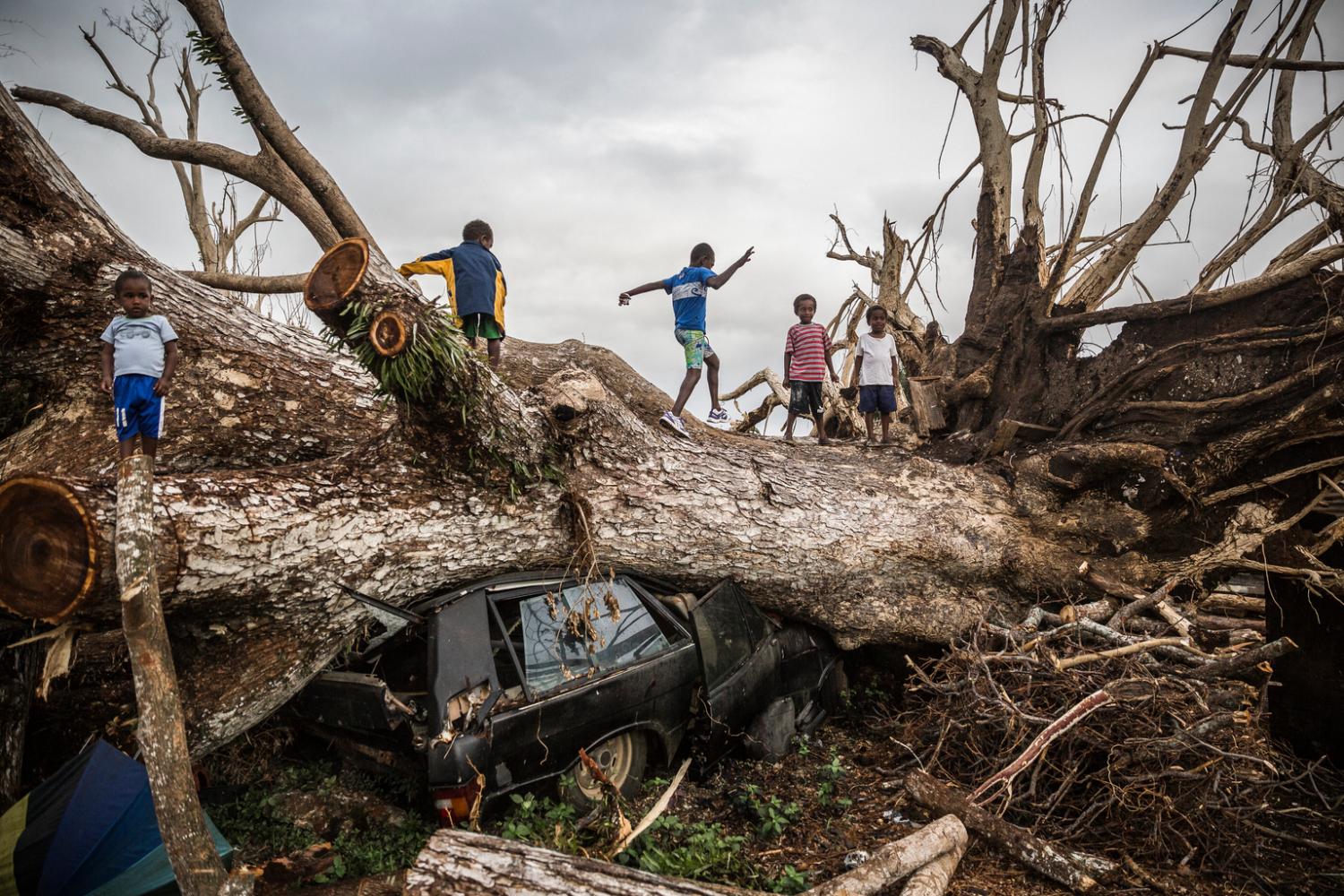
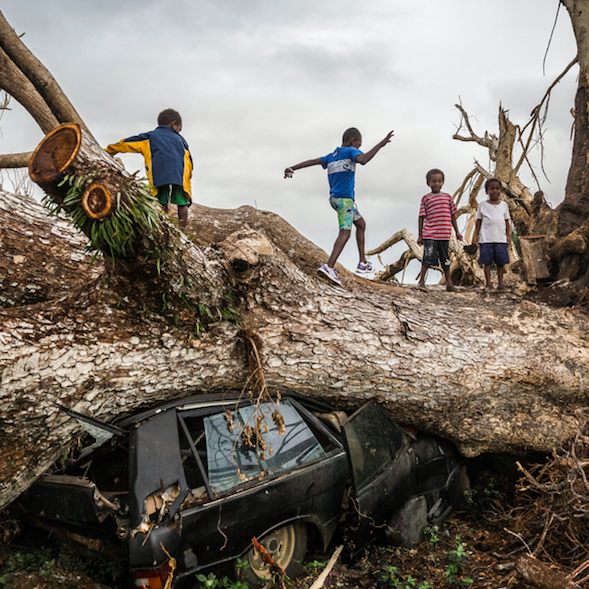
Photo: On March 29, 2015, children play on a fallen tree that came down during Cyclone Pam earlier that month, crushing a car on the outskirts of Port Vila in Vanuatu.
We can go back and forth about who exactly climate change could affect the most. Nevertheless, if we’re looking at the length of time, at a higher level we can say with certainty that young people, especially children, will face the most risk across their lifetimes if global leaders cannot find a way to curb the climate crisis. Unfortunately, as is the case with many global events such as COP26, children are largely overlooked: They don’t vote, they obviously don’t have the funds and resources to attend and as a result, their voices are often not heard.
But this crisis is not only about representation: Providing children the tools they need so they are aware about climate change risks, and done so in a way in which they can grasp this information (no voluminous PDFs that take almost as much time to download as they do read, please), is one way to start.
On that point, let’s start with a discussion of the level at which children worldwide are at risk.
COP26 is in a large part about a children’s rights crisis
As COP26 launched, UNICEF issued resources including a fact sheet that distills why the climate crisis is also a children’s rights crisis. The numbers are daunting. A recent UNICEF report suggests just about every child on the planet faces at least one climate or environmental risk, which range from volatile weather events to pollution to water scarcity.
Furthermore, approximately one billion children (or 50 percent) live in nations classified as “extremely high risk.” And, 850 million of them live in regions where at least four climate and environmental “shocks” overlap; 330 million are home in areas where five such shocks impose risks.
As dystopian as that sounds, UNICEF says there are glimmers of hope and does offer potential solutions to these problems. Among them: investments that will open up access to safe water, sanitation and hygiene, the results of which could reduce risks to at least 415 million kids. “Climate-smart” health services, as well as social welfare safety nets and education systems that account for climate risk could also improve the prospects for hundreds of millions of children across the globe.
In addition, when it comes to talks that involve emission reductions, limiting global warming to 1.5 Celsius and investments that can help build resilience, UNICEF insists representatives of children must have a seat at those tables, including the ones at COP26
This all sounds easy on paper (or PDF). The hard part is ensuring children have the resources to know where to start and how to ensure their voices are heard.
At least one company is lifting children’s voices during COP26
Lego is one company that is taking on this challenge. The toy company undertook research that involved about 6,000 global youth, ages 8 to 18, to glean their views on they think should be done in order to tackle the global climate crisis.
Among the findings, the researchers concluded that almost half of the children think about the environment once a week, with 11 percent of them daily; global warming is their top concern when considering people and the planet; more than two-thirds want a job that will not hurt the environment, while just over half of them said they would want a job that actually improves the environment – yet many aren’t quite sure about how to go that route.
As Lego conducted the research, one query asked the participating children three instructions that they would give global leaders to take on climate change risks. The results are shown below:
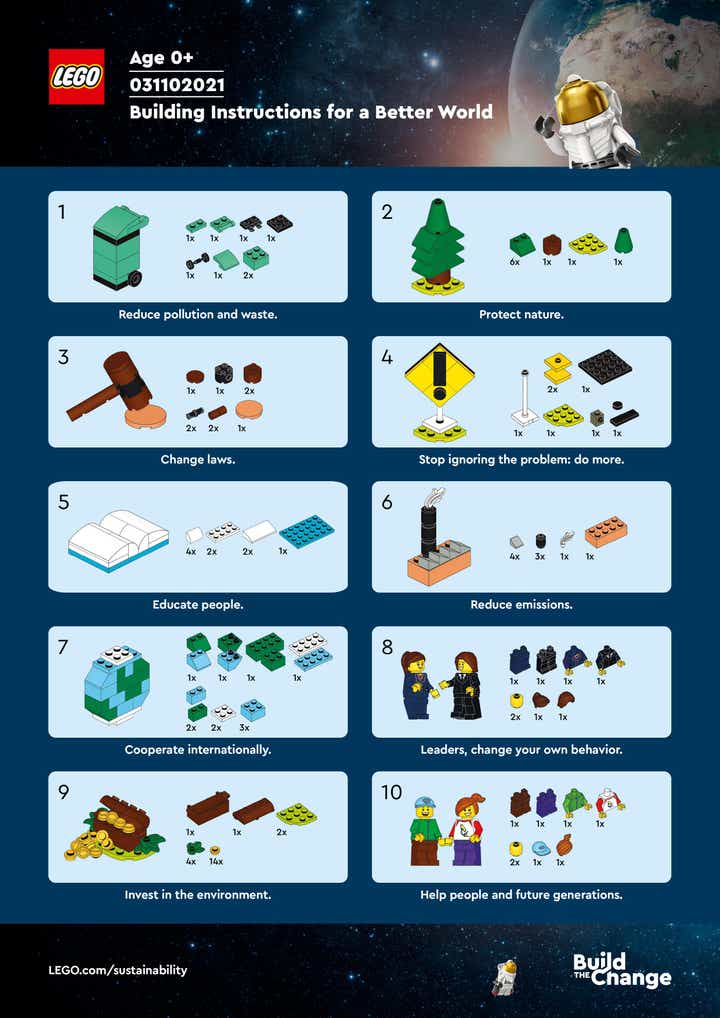
Lego took those findings, designed a handout that looks like one of its toy set’s instruction guides, and says the to-do list will be handed out to COP26 delegates.
While that is certainly one step in communicating the gravity of the climate justice, Lego has another opportunity at hand – the simple, to-the-point climate action guide could actually serve as a tool to help communicate how all citizens can become part of the global climate change conversation. Sure, tucking them into the company’s Lego sets is one way to start – most kids worldwide, however, do not have enough coin to score even the smallest sets.
Nevertheless, this 10-step guide is golden. Lego created a tool that can be translated into any language and then could be distributed at school and posted in public spaces. To the naysayers who say several of these steps are simplistic or unrealistic, the response is that such criticisms underestimate children: At a bare minimum, the use of these guides can help spark imagination, discussion and even concrete ideas – all of which are necessary as it is clear that lofty 2030 goals will be far from enough from preventing the planet from encountering a climate catastrophe.
Image credits: Vlad Sokhin via UNICEF; Lego
Invesco Rolls Out Two New ESG Funds
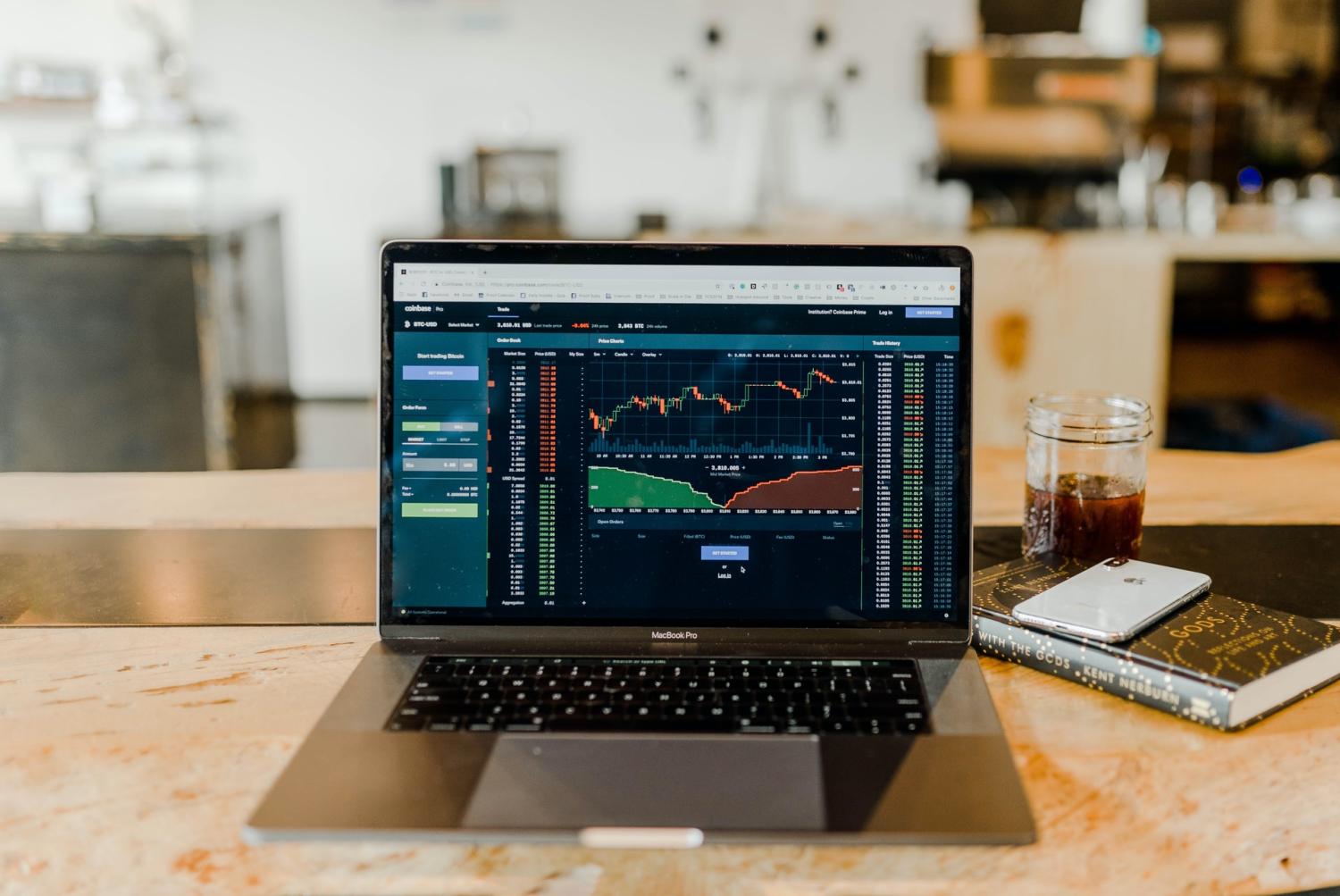

Invesco Ltd., a global asset management firm, just introduced two new Environmental, Social, and Governance (ESG) fund offerings: the Invesco ESG NASDAQ 100 ETF (QQMG) and its ESG NASDAQ Next Gen 100 ETF (QQJG). The company’s ESG funds debuted last week, are passively managed, and have an expense ratio of 0.20 percent.
“Our clients appreciate the rigor that the rules-based methodology of an indexing-tracking ETF brings to ESG,” said Nick Kalivas, Head of Factor and Core Equity Product Strategy for the Invesco ETFs and Indexed Strategies team in an interview with TriplePundit.
“For investors who are already fans of the companies included in the Invesco QQQ [which tracks the Nasdaq-100 index], the two new ETFs offer a choice to stay invested in many of those companies while tilting towards their own moral and environmental values,” added Kalivas. “Since the QQMG and QQJG ETFs closely track the performance of the QQQM and QQQJ ETFs, they should not have to compromise returns to invest with their values.”
Meeting the criteria for ESG funds
These funds exclude companies that don’t meet Nasdaq's ESG criteria. For example, businesses involved in alcohol, cannabis, controversial weapons, gambling, nuclear power, oil and gas - as well as tobacco - are not eligible.
The issuers must meet the ten United Nations Global Compact (UNGC) principles related to labor, corruption, human rights, and the environment. Companies must also have a Sustainalytics score of less than 40 on a 100-point scale for unmanaged ESG risks.
What is Invesco’s QQMG?
This ETF is based on the Nasdaq 100 Index, which comprises the largest 100 domestic and international non-financial companies listed on the NASDAQ exchange. The expense ratio of QQMG is just 0.05 percent higher than that of QQQM, which is .15 percent. The QQMG fund is very similar to the Invesco Nasdaq 100 ETF (QQQM) but with an ESG filter that removes several companies and weighs the companies slightly differently.
For example, the top ten holdings for the two funds are identical and consist of Microsoft, Apple, Nvidia, Netflix, Amazon, Facebook, Adobe, Tesla and two classes of Alphabet stock. These stocks, however, comprise 53 percent of QQQM and 54 percent of QQMG. In total, the fund left out six firms within the Nasdaq 100, three of which are electric utilities.
Measuring ESG performance outside the Nasdaq 100
Invesco's ESG NASDAQ Next Gen 100 ETF (QQJG) tracks the performance of the Nasdaq Next Generation 100 Index, which are the largest non-financial firms outside of the Nasdaq 100. It is similar to the company's Nasdaq Next Gen 100 ETF (QQQJ), but the top holds and weighing are slightly different.
At its launch, 10 companies in the Nasdaq Next Generation 100 Index didn’t qualify for the fund. Of these, four are casinos and three are pharmaceutical companies. Companies in other industries also did not make the cut. Beyond Meat, for example, was excluded from the fund for having a Sustainalytics score over 40, thereby disqualifying the company.
There is a more significant difference when comparing QQQJ and QQJG vs. QQQM and QQMG. Tractor Supply Company and Trimble replaced Roku and Trade Desk in QQJG. The top holdings in QQQJ account for 21 percent of the total, compared to 25 percent with QQJG.
These two new Invesco ESG funds offer more options to investors wishing to eliminate specific industries or companies with high ESG risks. Although the funds look similar to their non-ESG counterparts, there are fundamental differences. Also, because the expense ratios are low, they have the potential to enable higher returns for investors.
Image credit: Austin Distel via Unsplash
Island Breaks Ground on Brazil's First Circular Economy


A picturesque Brazilian island known not only for its stunning coastlines but also its commitment to sustainability is getting even greener. Colorado-based Ball Corporation broke ground this month on a circular economy lab in Fernando de Noronha (pictured above) that expects to recycle 100,000 pounds of aluminum in its first year of operations alone.
The project, named the VADELATA for the Planet Lab, will be Brazil’s first circular economy when it opens its doors in 2022. Environmentalists have been abuzz over the endless possibilities circular economies can create. Instead of approaching resources from a linear perspective - create then use then trash - circular economies take the decades-old, recognizable slogan of reduce, reuse, recycle to the next level. The regenerative, zero-waste product of circular economies is widely seen as a major defense against the rapidly changing climate - it’s no surprise officials are lining up to invest in strategies that can propel the next era of sustainability.
Eliminating the impact of single-use containers
Let’s take VADELATA for the Planet Lab as an example. Fernando de Noronha’s dependence on imports and resources from the mainland of Brazil creates a big environmental footprint for a tiny archipelago. One of those resources that the island currently relies on as an import is aluminum to make important products like aluminum cans. These cans support the popular restaurant industry on Noronha, but the environmental cost is significant. But not for long. The new lab is intended to entirely eliminate the need for any future imports for aluminum beverage packaging.
“The resources within this lab will allow us to create a circular economy that will make a difference in the lives of residents and tourists in Brazil and contribute to a more sustainable planet,” said Fauze Villatoro, Commercial and Sustainability Vice President, Ball Corporation South America. “By building a more innovative and effective way to collect beverage aluminum cans and educating consumers about the importance of recycling, we can help solve the packaging waste crisis."
The massive, 4,300 square-foot facility will have a can drop-off site and a preprocessing station for aluminum cans, where they’ll be cleaned and pressed before being sent off to a local Ball Corporation manufacturing plant and recycling center. There, they’ll be turned into new coils. All proceeds from selling the new coils will be pumped back into the can collection process.
Part of Ball’s commitment to the circular economy is stoking interest and educating students and restaurants on the importance of recycling. The state-of-the-art facility will include conference rooms and exhibition space where tourists and residents can sit in on lectures and learn more about advancing sustainability in their communities.
Noronha is no stranger to paving the way for environmental change in Brazil. In 2019, it became the first locality in the country to ban single-use plastics - a significant and meaningful measure taken by an archipelago surrounded by water given plastics' bad aquatic track record.
The bottom line – the circular economy is a win-win
The circular economy will fuel the beverage packaging industry on the island in a sustainable and profitable manner. It may be the first circular economy seen in Brazil, but in a country rich in resources (for now) but poor in regulation, let’s hope it’s not the last. Fernando de Noronha Mayor Guiherme Rocha agrees.
“This partnership with Ball is an important step to our great sustainability vision for the island,” Rocha said. “The lab brings a concept that needs to be increasingly disseminated across the country and around the world, combining care for the environment and income generation for the local economy.”
Image credit: Ricardo Avelar via Unsplash
How COP26 Could Push Companies to Involve the Workforce at All Levels on Sustainability
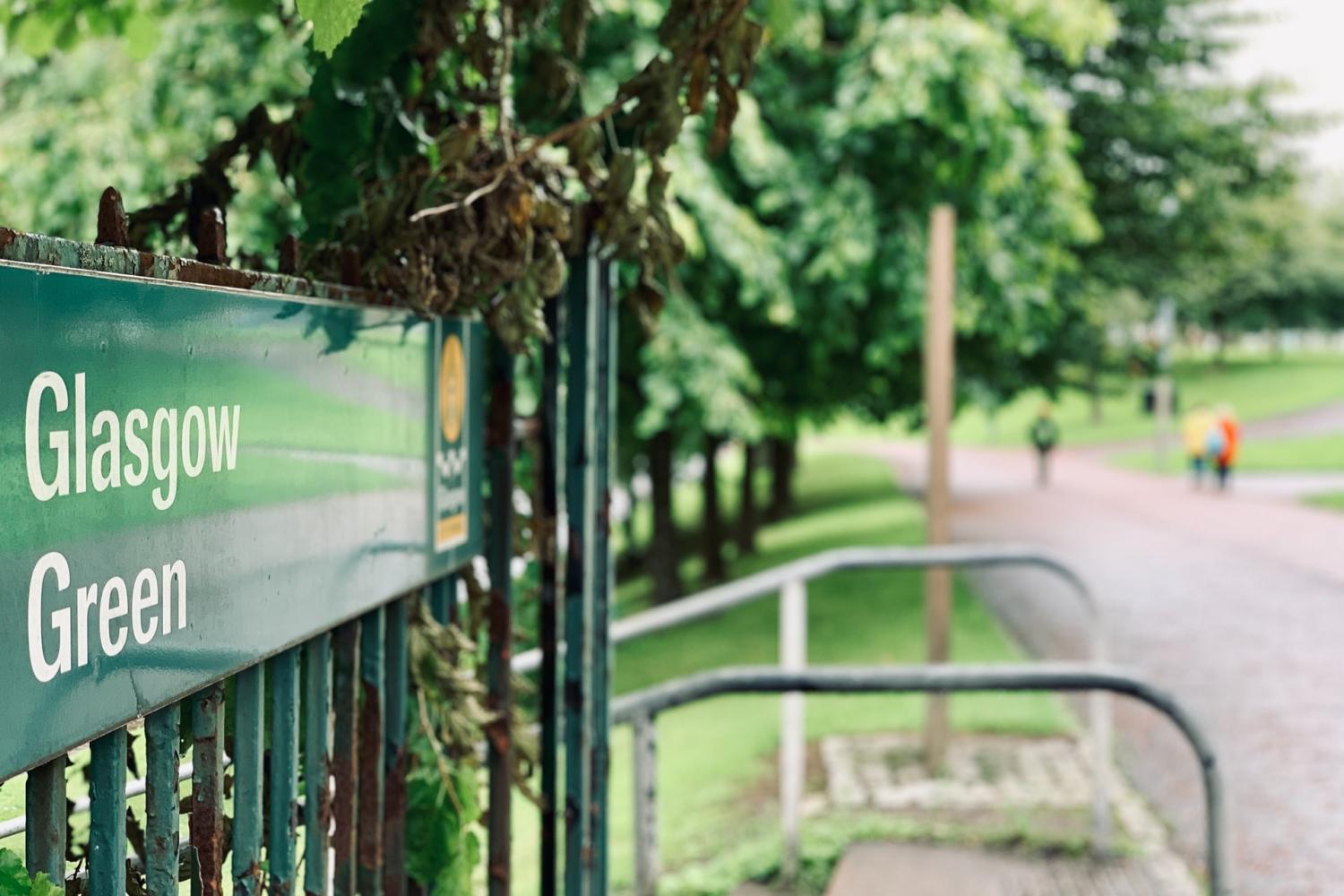
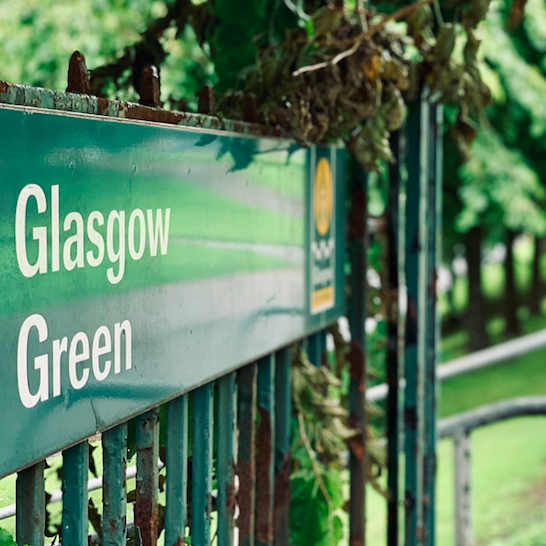
The delegates to COP26 have made their travel plans and are leafing through their Glasgow guidebooks. More than 30,000 climate experts, campaigners, policymakers and world leaders are about to descend on the city for the most keenly anticipated environmental event for years.
As they gather to debate how to make progress on climate change, hundreds of thousands of people will attend side events in citizen meeting spaces to engage with each other on wide-ranging aspects of environmental awareness.
The U.K. Government, as host, has acted by example with legally binding targets for greenhouse gas emission reduction and the Scottish Government has burnished its credentials with plans for net zero emissions by 2045.
But fine words butter no parsnips, as the saying goes, and once all the talking is over and Glasgow settles back into its dark winter normality, it will be time to take a long, hard look at what is actually happening on the ground.
In the factories, schools, offices, businesses and workplaces across the country, is the message getting through? Is there a recognition that time is of the essence if we want to create a sustainable future? Or will it just be back to business as usual?
At first glance, the signs in Scotland are not particularly encouraging. Only a small minority – some 11 percent - of businesses are actually doing anything to address their carbon footprint. A slightly more heartening 50 percent believe that the issue is relevant.
This, however, means that 50 percent of businesses do not believe that the crisis is upon us and nearly 90 percent are blithely carrying on as normal. Therefore, there is both a relevancy and an action problem. How can this be addressed?
The key is to get the message across that, rather than being an additional burden, good sustainability and environmental and social governance practices lead to lower operating costs, improved profitability and improved share price performance, according to ongoing research.
There is also the matter of the attitudes of future customers. One McKinsey study shows that for the increasingly important Gen Z demographic, consumption is a matter of ethical concern and that they will favor companies which best manage their environmental and social impact.
As a localized example, Scottish companies are most likely to have to commit to net zero within nine months if they want to pick up public contracts. This is a huge indicator of where the market is going, and there really is only one direction of travel for us all.
The good news is that companies do not have to transition to net zero overnight and relatively simple and easily implementable changes can take the organization a long way down the carbon reduction road.
And the key here is to get the workforce involved at every level of the business, leveraging and unleashing their latent talent and enthusiasms and bringing the decision-making about environmental impact into the body of the kirk.
While it could be argued that the prevention agenda has largely been accepted at executive level, the real imperative now is to integrate the environmental message into entry and middle level training.
We are making our own contribution to this new way of thinking with the launch during COP26 of our new sustainability training game: Go Green, which is designed to harness the power of experiential simulation learning to highlight the need for change throughout a company or organization.
This is not about telling people what to do, or lecturing them, but about engendering self-generated ideas which they can ‘own’ and implement, whatever their position in the hierarchy. It is about learning by doing, backed by the powerful influence of peer encouragement.
The fact is that the overwhelming majority of people are already signed up to a sustainable agenda in their personal lives, participating in recycling and other activities, so it is reasonable to argue that they would welcome the opportunity to put their principles into practice in their working lives.
At the moment they may not have the agency or the permissions to implement the incremental changes which will rapidly become cumulative and make a significant positive difference. Bringing onboard everyone is key.
It has been said before that the best way to get someone to believe in your idea is to get them to believe it was their idea in the first place, and raising awareness among staff will lead to practical suggestions from people who know how their part of the business works and how it could be improved.
Business thinking used to be about people and profitability. Now we must add another P: – people, profitability and now planet.
Image credit: Phil Reid via Unsplash
Long Before COP26, This University Led on Climate Action


Less than a mile and a half from the Glasgow venue where the COP26 climate negotiations are taking place sits one of Europe’s oldest and highly-ranked universities - one that is taking its role as climate leader in the host city seriously.
Taking the lead before COP26
The University of Glasgow (UofG) did not wait for COP26 to arrive on its doorstep to take action on climate. In 2014, it was the first university in Europe to pledge to divest from fossil fuels, followed by a declaration of a climate emergency in 2019. "As a university,” Rachel Sandison, the university’s vice-principal for external relations, told TriplePundit, “we feel that it is our civic duty to do all that we can to find solutions to the climate emergency and to influence others through the example of our leadership sets.” She added that the university expects to reach full divestment by 2024, with reallocation of approximately $25 million (£18 million) of current investments over a 10-year period.
UofG also consulted with staff and students to develop its sustainability plan, "Glasgow Green," which was released earlier in 2021. The plan sets forth a goal of becoming carbon neutral by 2030 and lays out specific projects to meet that goal, including energy efficiency improvements, more efficient heat pumps, and solar power installations. Emissions have already fallen 13 percent compared to 2015 levels and are on target to meet an interim goal of a 20 percent reduction by the end of this year.
The university will use verified carbon offsets to help meet the carbon neutrality goal, at which point they will review the offset policy. Further, in addition to offset projects in developing countries, the university will undertake projects in its backyard, such as reforesting land or restoring peatland in Scotland. In addition to their environment benefits, these projects can offer research and learning opportunities for the university’s academics and students. This is in line with national initiatives that seek to rewild parts of the country, improving biodiversity, increasing carbon sinks and building resilience to help address climate change impacts.
Approaching climate action internally
The university’s sustainability plan also works alongside UofG’s new strategy of creating more cooperation in teaching and research. This strategy “articulates a vision to bring inspiring people together through a shared common purpose,” Sandison told TriplePundit, “unlocking our vast potential as a world-changing community by working in partnership. We recognize the importance of collaboration and connection, and this is never truer than when responding to the key global challenges of our time.”
One key pillar of both strategies is the engagement of students. The students pushed the university to divest from fossil fuels, and, according to Sandison, they continue to push the university’s staff to do more sooner on climate change. To that end, in 2020, the administration created the Center for Sustainable Solutions both as an interdisciplinary hub for climate work, hosting the university’s student internship program and as a place in the larger community for external education about climate change. The students involved in the center also help inform university policies, such as the development of “Glasgow Green.” And as a leader in scientific study in the U.K., it has expanded its academic offerings to include more climate-related courses.
Working with the local community
Collaboration goes beyond academic for UogG to the city itself. “Glasgow is also one of the most socio-economically diverse cities in the world. There is a real danger that climate-change could further exacerbate the social inequalities already felt within the city,” Sandison said. “By addressing climate change, we can help to tackle these inequalities by finding solutions that support a just transition.” Because of the university’s expertise, she added, “we have a duty to lead from the front.”
One way the university engages with the city is through an initiative called Climate Ready Clyde, the region’s cross-sector plan to create a climate adaptation plan. Launched in June 2021 and supported by the Scottish government, UofG is one of fifteen members figuring out how to build fairer, more inclusive and resilient metropolitan area through a number of targeted steps, such as resources for nature-based solutions in the most vulnerable areas along the River Clyde, coastal areas, and low-lying, low-income urban areas as well as implementing a robust early warning system.
Using its particular expertise, the university is working to ensure Climate Ready Clyde’s innovative, inclusive approach is replicable for other areas as well. The university will take that approach with them to COP26, where its representatives will participate in the proceedings through the COP26 Universities Network, which brings over 80 U.K. universities and research centers to the negotiations to ease government representatives’ access to research and expertise. “However,” Sandison added, “COP26 is not just two weeks in November. At the University of Glasgow, we are focused on the important legacy that COP26 will leave our university community, the city, the country, and the world.”
Making climate personal
For Sandison, she did not expect this role of shepherding the university’s climate role to be in her purview, but she relishes it. As she told TriplePundit, “I have a broad remit that allows me to connect with all of the university’s audiences, covering student recruitment and admissions, international partnership development, marketing and communications, fundraising and alumni relations, and widening access and lifelong learning. This golden thread of external relations provides me with an incredible platform to engage, connect and share our world-changing stories with the world.”
There is a lot of pressure on the COP26 negotiations as all eyes turn to Glasgow. COP was canceled in 2020 due to the pandemic, but climate change did not stop raging across the world, and it fact it brought on record heat, floods, drought and wildfires. But beyond the walls of the venue, Glasgow’s residents and academics have the daily effects of a changing climate to deal with. When I was a graduate student at UofG, Glasgow was at the beginning of its renaissance. Now, the city known as the “Dear Green Place” and its oldest university are doing more than playing host to the most important climate negotiations to date; it is ensuring a sustainable future for all Glaswegians.
Image credit: Johnny Briggs via Unsplash
Why Diversity Is Still Missing in Boardrooms


There is no doubt that a diverse workforce equates to new ideas and an inclusive environment. However, initiatives to bring diversity in boardrooms are lagging. In the U.S, boards are predominantly white with less than one fourth of newly elected directors being minorities. Among the global Fortune 500 companies, visible minority women represent less than 5 percent of board seats. There is a lack of age diversity as well. Young professionals are underrepresented in boardrooms as the average age of directors is 63 years.
To understand why the lack of board diversity persists, there is a need to assess how boards are formed in the first place. Traditionally, the process of recruiting candidates and filling board seats occurs through personal networks or word of mouth referrals. While personal references can attest to skills and instill trust, it is not an objective method.
This is the point that Patricia Lenkov, founder and president of Agility Executive Search addresses in her book Time’s Up: Why Boards Need to Get Diverse Now. In the book, Lenkov describes the typical board search process as "restricted, exclusive and uncreative." From her perspective, the search for finding a new board director usually begins with the CEO and their advisors choosing candidates from their networks who are already a part of the corporate world. This is problematic because this process fills board seats with professionals who may be too similar in their experiences and backgrounds.
“To be truly authentic and effective, I think diversity initiative needs to begin at the top of the organization.” said Lenkov in an interview with TriplePundit. “I think employees today are very savvy about misrepresentation and things that are not authentic, and they will look at this and see if there's discrepancies.”
Board diversity creates a positive impact for companies. After diversifying their boards, directors reported unique perspectives, enhanced board and company performance, improved relationships with stakeholders and enhanced overall approach to company strategy and risk. If fair representation in the board level is proving to be fruitful, why is diversity still stagnant here?
What’s impeding change in boardrooms
According to Lenkov, there are lingering beliefs within corporate teams that prevent them from recruiting and filling diverse board seats. The first belief is a scarcity of qualified diverse candidates. Lenkov cleared this misconception by explaining to 3p that companies must seek new and creative ways to find such candidates and go beyond traditional methods. Companies simply need to work harder to recruit. Another myth she addressed is thinking one diverse board member is sufficient. This isn’t true, according to Lenkov. Boards need to continuously build on diversity, equity and inclusion (DEI).
In addition to this, Lenkov explained that long board tenures and inertia are impeding diversity in boardrooms. Directors tend to stay on board for a long period of time and this prevents new individuals from taking a seat. While a board size can be increased, a long tenure contributes to the homogeneity of a board itself. In fact, directors with the longest tenure are less likely to want change in boardroom dynamics including replacing or bringing new directors on.
To this point, Lenkov suggested looking past traditional qualifications and backgrounds. "Boards need to understand that not all members need to be CEOs or CFOs. They can be digital people, heads of technology, they can be marketing people, they can be human capital people,” said Lenkov. “There’s all kinds of really good skill sets that boards can use.”
Integrating diversity authentically, not as an obligation
Overcoming these misconceptions is critical for creating diverse boards because it encourages leaders to integrate diversity authentically in the work culture. Enforcing diversity without addressing deeper issues is detrimental especially if there are concerns about boardroom changes.
In the U.S, 58 percent of directors claim diversity is driven by political correctness. In addition, 31 percent of directors claim that board diversity is resulting in the selection of additional, unnecessary candidates compared to 26 percent in 2020. With the SEC’s recent approval of NASDAQ’s proposal of board diversity and disclosure requirements, there is a danger of board diversity simply becoming a requirement to check off on a recruitment qualification list.
To counteract inertia, long tenures and implementing diversity as an obligation, Lenkov explained to 3p that robust independent board evaluations are needed. According to her, current board evaluations are not extensive enough. What’s needed, Lenkov further explained to 3p, is assessing a board member’s performance and if it is not up to par, then they should be replaced. This can undoubtedly be challenging for members. In fact, dealing with underperforming directors is the biggest challenge for boards. And here, lies a great opportunity for transformation.
If diverse boards are going to be formed, a lot of change is necessary. Before introducing any obligatory requirements, we can assess and change the existing recruitment and management processes that hinder diversity at the start.
Image credit: Sora Shimazaki via Pexels
Tire Manufacturers Collaborate to Accelerate Progress on the SDGs
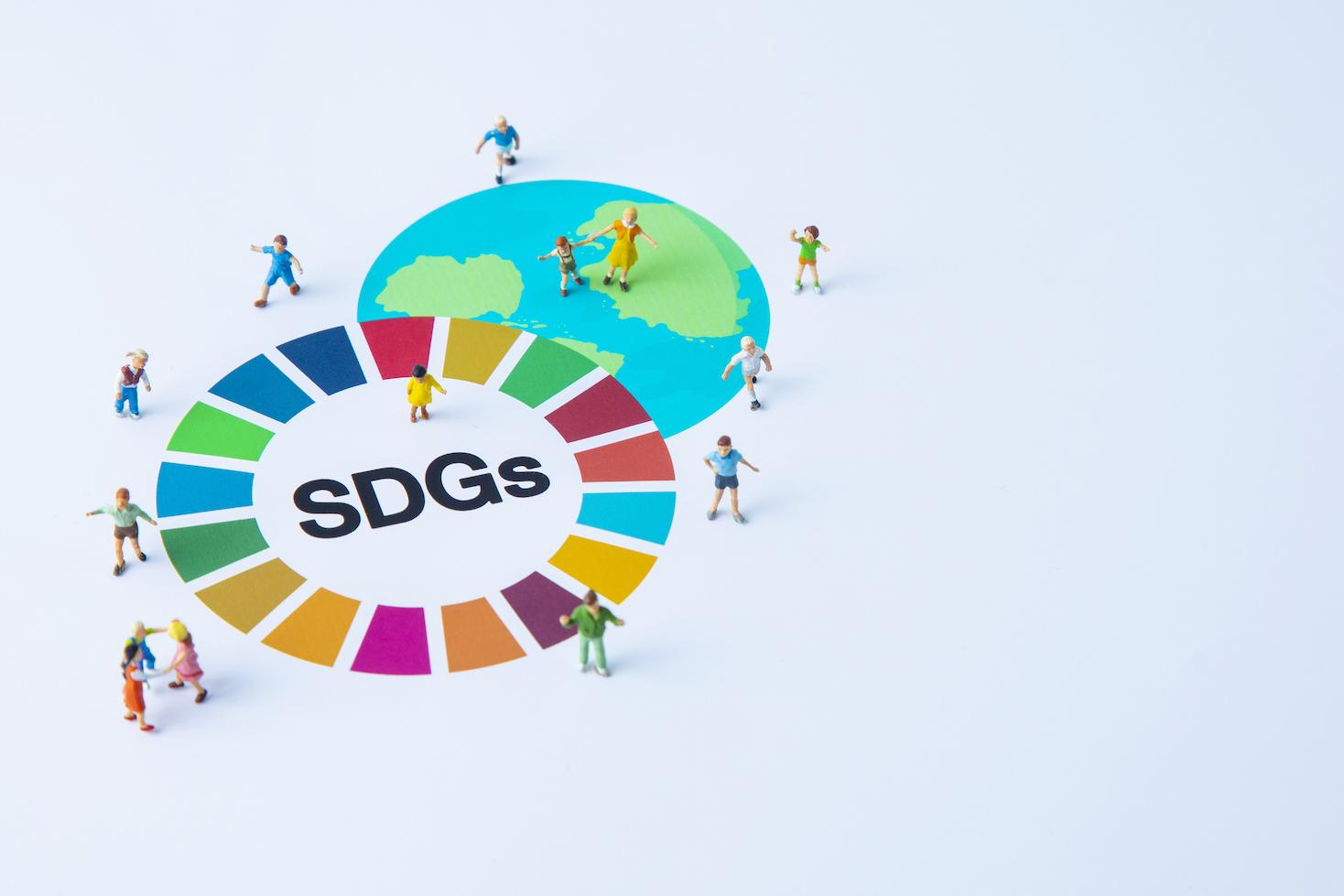
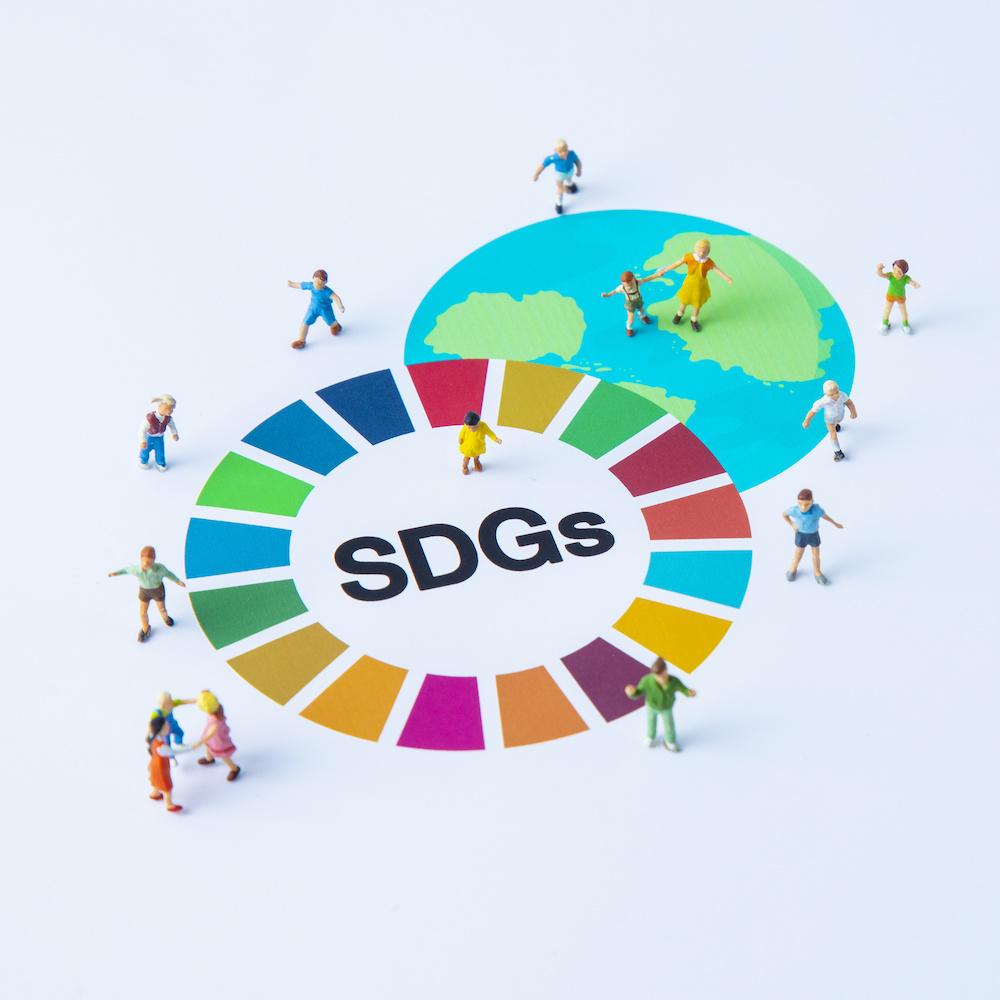
Following on the heels of the forest, chemical, electric utilities, and oil and gas industries, the tire sector is the latest to come together under the auspices of the World Business Council for Sustainable Development (WBCSD) to develop a roadmap for how it can work to support the U.N. Sustainable Development Goals (SDGs).
With only eight years left to achieve the global goals, sector leaders say time is of the essence to accelerate actions and make meaningful contributions.
Launched in May 2021, the Tire Sector SDG Roadmap was developed by the Tire Industry Project (TIP), a voluntary CEO-led collaboration under the umbrella of the WBCSD. The group’s membership is currently comprised of 10 major global tire companies and co-led by Bridgestone, Goodyear and Michelin.
TIP member companies account for more than 60 percent of the global tire industry, which produces 1.7 billion tires each year and employs more than 950,000 workers worldwide. Through TIP, the industry has already made important steps to proactively identify and study the potential human health and environmental impacts associated with the life cycle of tires. One example is the Global Platform for Sustainable Natural Rubber (GPSNR), launched in October 2018 to bring rubber industry stakeholders together to ensure sustainable production and supply.
The Roadmap is TIP’s latest and perhaps most formidable project yet. It took 18 months develop and included consultation with numerous stakeholders — some of whom, such as WWF, the International Federation for Human Rights and the Rainforest Alliance, have in the past encouraged the sector to do more. TIP also engaged tire trade associations and customers through the Alliance for Automotive Innovation, which represents leading automakers such as Honda, BMW and Ford. The voice of suppliers was also represented through consultation with various groups including the Houston-based International Institute of Synthetic Rubber Producers.
The end result is a 49-page document that zeroes in on the eight SDGs where the sector can have the greatest impact, with SDG 8 (Decent Work and Economic Growth) and SDG 12 (Responsible Consumption and Production) mapping against industry actions most frequently. While critics might be tempted to chalk the report up to a tick-the-box exercise, Anne-Cecile Remont, director of TIP at WBCSD, expressed loftier hopes during the Roadmap’s virtual launch.
“The Roadmap is not meant to be a static document but to be brought to life through actions of both member companies and the wider sector, as well as through collaboration with customers, suppliers and other stakeholders,” Remont said. “It sets out to show what tire manufacturers can achieve as an industry, what companies should manage independently, and what requires action across the value chain.”
Driving change through measurable actions that support the SDGs
The Roadmap identifies opportunities in seven areas across three main themes: supply chain, operations, and products and services. For example, it calls for the implementation of sustainable procurement practices and the establishment of environmental, social and governance (ESG) responsibilities throughout tire industry supply chains, including the promotion of transparency and traceability.
Traceability within the supply chain in particular is an area where stakeholders agree more action is needed for alignment with the SDGs. Amongst several company examples, this year Pirelli produced the world’s first Forest Stewardship Council (FSC)-certified tires, with natural rubber and rayon traced and certified along the whole supply chain.
Continental Tires has been engaged in a project since 2018 with the German Federal Ministry of Economic Cooperation and Development to pilot an electronic traceability initiative within its natural rubber supply chain in Indonesia. As part of the pilot, Continental was able for the first time to seamlessly trace a rubber supply chain from cultivation and further processing to its tire plant in Germany. Recently, both partners agreed on a significant extension of their successful project. The aim is to expand the number of smallholders involved in the program to 4,000 by 2024. Continental plans to gradually expand electronic traceability globally within its natural rubber supply chains. By 2030 the company is committed to source 100 percent natural rubber from sustainable origins.
Another call to action in the Roadmap is ensuring sustainable management of end-of-life tires (known in the industry as ELT). Globally, an estimated one billion tires reach the end of their useful lives every year, according to TIP. Disposing of them in an environmentally sound and productive way continues to be a challenge, although examples of progress exist. To accelerate progress, the Roadmap calls on tire manufacturers to develop tools, exchange best practices, improve access to information, monitor progress on ELT collection and recycling, and use this information to engage stakeholders (including end-users and regulators in countries where ELT infrastructure is less developed) to promote circularity.
Tire and road wear particles (TRWP), those tiny particles generated by tire and road surface when driving, are also given important coverage in the Roadmap, with a stakeholder call-to-action for evidence-based solutions. TIP has published numerous studies since its beginning in 2005 relating to TRWP.
Potential for impact
Amy Smith, WWF’s director of forests, is at the forefront of her organization’s efforts to address the threats to global forests and support human well-being. A key part of WWF’s strategy is to eliminate one of the largest drivers of deforestation: the irresponsible expansion of agricultural operations. This includes unsustainable practices related to the harvesting of natural rubber.
Smith, who participated in the development and launch of the Roadmap, sees the potential for meaningful impact by the sector through the tire industry-spearheaded Global Platform for Sustainable Natural Rubber (GPSNR).
“Implementing on this Roadmap would mean the sector could make a real contribution to ending deforestation, increasing forest cover, creating decent jobs, establishing sustainable production and consumption systems, and sustaining a healthy ecosystem for generations to come,” she said. “The next step, of course, is to focus on goals, targets and KPIs. Companies will need to show they are making progress against their commitments — that will be critical.”
TIP agrees, promising to share indicators to measure progress against Roadmap targets by 2023, and launching a website to host the Roadmap and progress updates.
This article series is sponsored by the Tire Industry Project and produced by the TriplePundit editorial team. Members of the Tire Industry Project (in alphabetical order) are Bridgestone, Continental, Goodyear, Hankook, Kumho Tire, Michelin, Pirelli, Sumitomo Rubber, Toyo Tires, and Yokohama Rubber.
Image credit: Sakosshu Taro/Adobe Stock